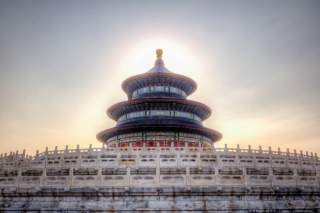Revealed: The Great Chinese Economic Transition Is Here
No need to panic: If China is indeed making the transition it has long said it wishes to make towards consumption and services, it would look like what we are now seeing.
Australian goods exports to China peaked a couple of years ago and have since come off markedly (though they now seem to be picking up off the low reached in April this year). The value of Australian iron ore exports has followed much the same pattern, peaking a couple of years ago and now moving off lows reached in April. But the volume of Australian metals and minerals exports has followed a quite different pattern. In June this year they were nearly one third higher than two years earlier. Export values matter for income, but it's the volume which is counted in Australian GDP numbers and which is most closely related to jobs.
But Australia's future depends on services exports as much as or more than commodities, and here the Chinese market has recently been very strong. Education exports, which are produced and consumed here, have increased rapidly over the last few years. Students from China account for much of the increase. Foreign tourism in Australia has also grown vastly in recent years, and again much of the increase is accounted for by Chinese tourists. Other export services too have been increasing quite quickly, though it's unclear how much of the increase is attributable to China. All up, the value of Australia's direct export of services is up by nearly a quarter in the last two years, and the volume up rather more.
All that said, China's growth has slowed, and will continue to slow. It is highly desirable that it should. The IMF forecasts growth slowing to 6% in a few years, before recovering a little to 2020. Earlier work by the World Bank indicated China's growth would slow to 5% in a decade or so. China's workforce is hardly growing at all now, and will within a few years start to contract very slowly. There have been vast gains in labour productivity as workers move from rural subsistence jobs to city manufacturing jobs, but the scope for that to continue is now sharply limited. Manufacturing is slowing, and service sector jobs are generally less productive than industry jobs. In any case, the flow of workers from the country to the city is slowing. Increased capital has accounted for much of the gain in productivity and output, but as more capital has been added over the last three decades the return on additional capital has fallen (as it does everywhere).
By the time China slows to 5%, its economy may well be two thirds bigger than it is now, so the volume of its demand for iron ore and natural gas will still be significantly greater in a decade than it is today.
This piece first appeared in the Lowy Interpreter here.

